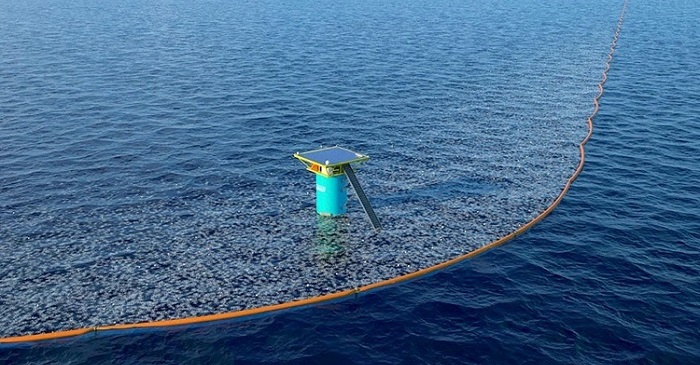A Giant Crowdfunded Machine Is About to Begin Cleaning up the Pacific Garbage Patch
 By Carey Wedler
By Carey Wedler
Scientists with the Ocean Cleanup Company are gearing up to tackle the Great Pacific Garbage Patch, an expanse of garbage in the Pacific Ocean that contains as many as 1.8 trillion pieces of plastic and spans 617,763 square miles.
Using a device designed by 23-year-old inventor Boyan Slat, who dropped out of an aerospace engineering program in college to focus on developing technology to clean up the world’s oceans, the Ocean Cleanup company will actually employ plastic to suck up much of the waste.
Widget not in any sidebars
The Independent summarized how it works:
The clean-up contraption consists of 40ft pipes – ironically made of plastic – that will be fitted together to form a long, snaking tube.
Filled with air, they will float on the ocean’s surface in an arc, and have nylon screens hanging down below forming a giant floating dustpan to catch the plastic rubbish that gathers together when moved by the currents.
Though the device cannot trap microplastics, which are already present in the water, Slat believes that acting now can prevent much more severe rates of pollution. As he told Fast Company:
Most of the plastic is still large, which means that in the next few decades if we don’t get it out, the amount of microplastics can be tenfold or 100-fold. It’s this problem that’s waiting out there to magnify many times unless we can take it out.
In a few weeks, the Ocean Cleanup Company will begin testing the device off the coast of San Francisco, ensuring it can be towed 200 miles to the garbage patch and finishing assembly. It is expected to be operational by the summer. Slat is confident the equipment will be able to clean up half of the plastic in the Great Pacific Garbage Patch — 40,000 metric tons — in five years (research conducted by his organization in conjunction with other scientists recently found the patch was 16 times larger than previously thought, weighing about 80,000 tons and equivalent to three times the size of France).

Within the first month, he plans to collect roughly 11,000 pounds of plastic and bring the first load of it back ashore by the end of the year. He hopes to sell it to companies to recycle; Adidas, for example, sold 1 million pairs of shoes made from ocean plastic in 2017.
Slat hopes this will fund the non-profit cleanup company, which received widespread public support through a crowdfunding campaign that raised over $2 million from 38,000 people around the world in 2014. The company received over $21 million from larger donors in 2017.
Though some scientists are skeptical that his device will work, he believes the trash the first round of cleanup collects will be proof that it’s feasible and effective. Still, Sander Defruyt, the New Plastics Economy lead for the Ellen MacArthur Foundation, believes that while cleanups are important, they only address symptoms of the problem and not the cause. Defruyt told Fast Company there must be innovation and drastic change in the world’s production and consumption of plastics, which wreak havoc on the environment and animals.
As Slat, who developed the technology when he was 19, said, “We as a humanity created this problem, so I think it’s our responsibility also to help solve it.”
Slat plans to expand the project to oceans around the world by 2020.


